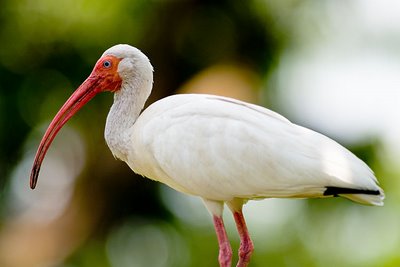Quick word about Photoshop and post-production
A couple days ago, I was reading a thread in the lighting forum on dpreview, where someone asked for people to post pictures on the thread where no post production or sharpening had been done. I personally thought that was a great idea. Then the flames started...
I couldn't believe how many people thrashed this guy. He didn't attack digital photography or Photoshop. He merely tried to start an open sharing of information. One or two others stood up for him and posted their pictures, which were pretty decent.
How can we go from decades of shooting "in camera" to totally dependent on Photoshop in a matter of a few years? As a longtime Photoshop professional (15 years), I try to keep my post production work to an absolute minimum. I may be very good, and pretty speedy in Photoshop, but why make extra work for myself?

When I show shots done with studio lighting outside, the conversation goes like this:
"How'd you get that look in Photoshop?"
"I didn't do any Photoshop. It's unretouched."
"How'd you get the sky so blue and get all that color?"
"Location lighting, a light meter, and proper exposure."
"But, it's digital... you don't need all that anymore. Can't you just do it in Photoshop?"
"Sure, but all I have to do is print. I don't have to spend hours and hours in front of my computer screen."
This is where the conversation ends. To some extent digital photography can lead to laziness, or a feeling that you don't have to pay attention to the fundamentals. It's an unfortunate trend.
The experts, of course, never agree on anything, except to disagree. One expert, Will Crocket of ShootSmarter University did an interesting presentation in one of his Photoshop seminars recently. He spent at least 30 minutes showing the audience how to adjust exposure using various techniques in Photoshop. Everyone busily scribbled in their notebooks, trying glean new techniques. And Will went on to produce a nice looking image. Then, he asked, "Now that I've shown you that way, who wants to see the easy way?" Everyone nodded and wondered what magical Photoshop secret would be bestowed on them. He held up his Sekonic L-358 lightmeter and said, "Get yourself a meter, learn how to use it, then use it." Snickering and whispering among the audience. "I'm serious," he said. "Why waste your time fixing in the computer what you should have gotten right in the first place?" I agree with Will on this one.
I've heard the opinion that you have to do Photoshop to be professional. I don't buy it. At our lab, we deal with dozens of pros and studios. Very, very few of them post-process anything. Wedding photographers shoot hundreds of shots at a single event. They don't shoot RAW. They shoot JPG, get the shot right in camera, like they did with their 'Blads and give us a DVD. We color-correct every single image by eye and make photographic prints they give to their clients. There is no possible way they could turn around 800 shots in one or two days like we do. The successful pro realizes that he or she doesn't make any money sitting in front of a computer or struggling with an inkjet printer; he makes money when he's shooting and selling the next job. Period.
Look, Photoshop is a great tool. Do I shoot RAW? Yes. Do I need to process those RAW files into JPG? Of course. But it usually ends there for most files. For some work, I will do a full retouch. The point is that Photoshop can improve good photography, but usually can't make bad pictures good.
To be fair, thought, take a look at the two shots below. One of my students in a Photoshop class I recently taught brought this picture in. She took it of herself with a 5MP point and shoot digital camera. I used this example to show what can be done in Photoshop to save pictures. As a teaching example, I think it's great, but I'd really hate to spend that much time on any of my own pictures.


So, can we just agree to spend more time trying to be better photographers looking through the viewfinder, instead of better photographers looking at a monitor? Or is this asking too much?


















